Goji berries are popular for their health benefits, including immune support.
Some people may worry about the plants' potential to have thorns, making handling them a concern.
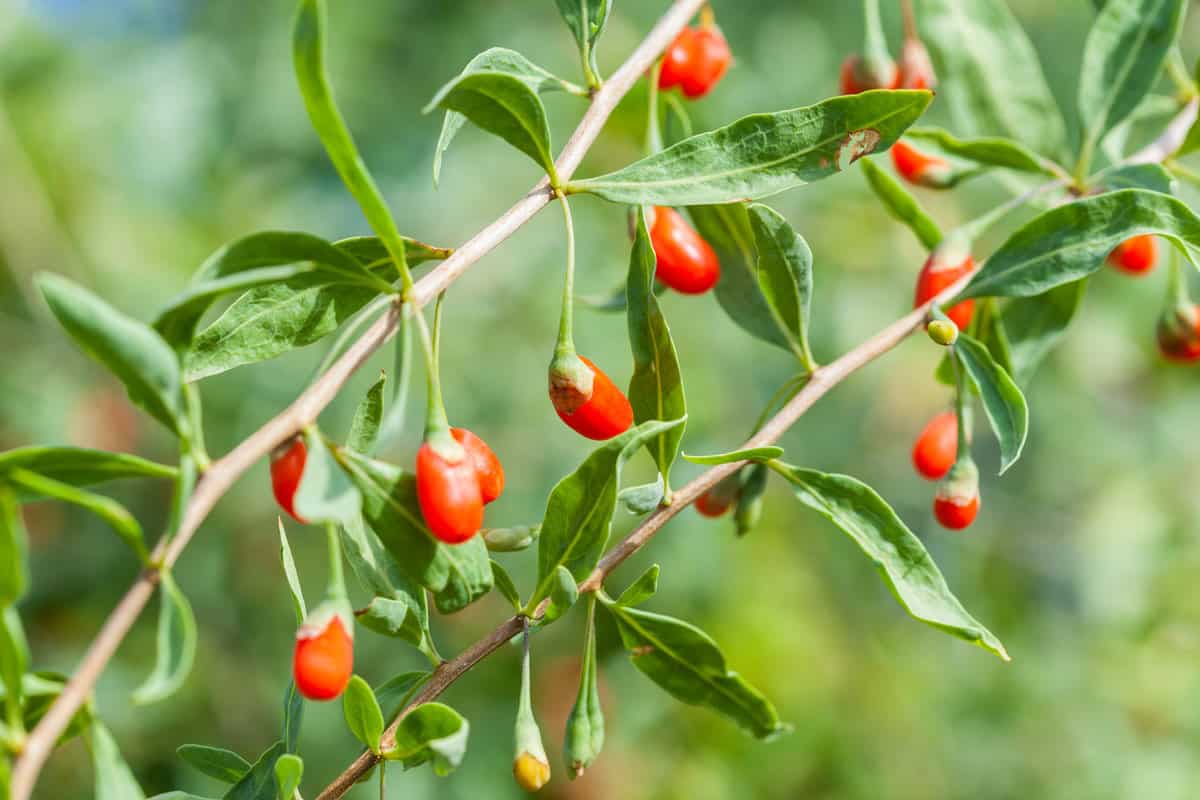
Understanding whether or not goji berry plants have thorns is crucial for safe cultivation and use, especially for home gardeners.
We'll talk about this topic further, providing insights on how to work with this nutritious superfood safely.
Do Goji Berries Plants Have Thorns?
Goji berry plants do have thorns. These thorny characteristics vary, depending on the species.
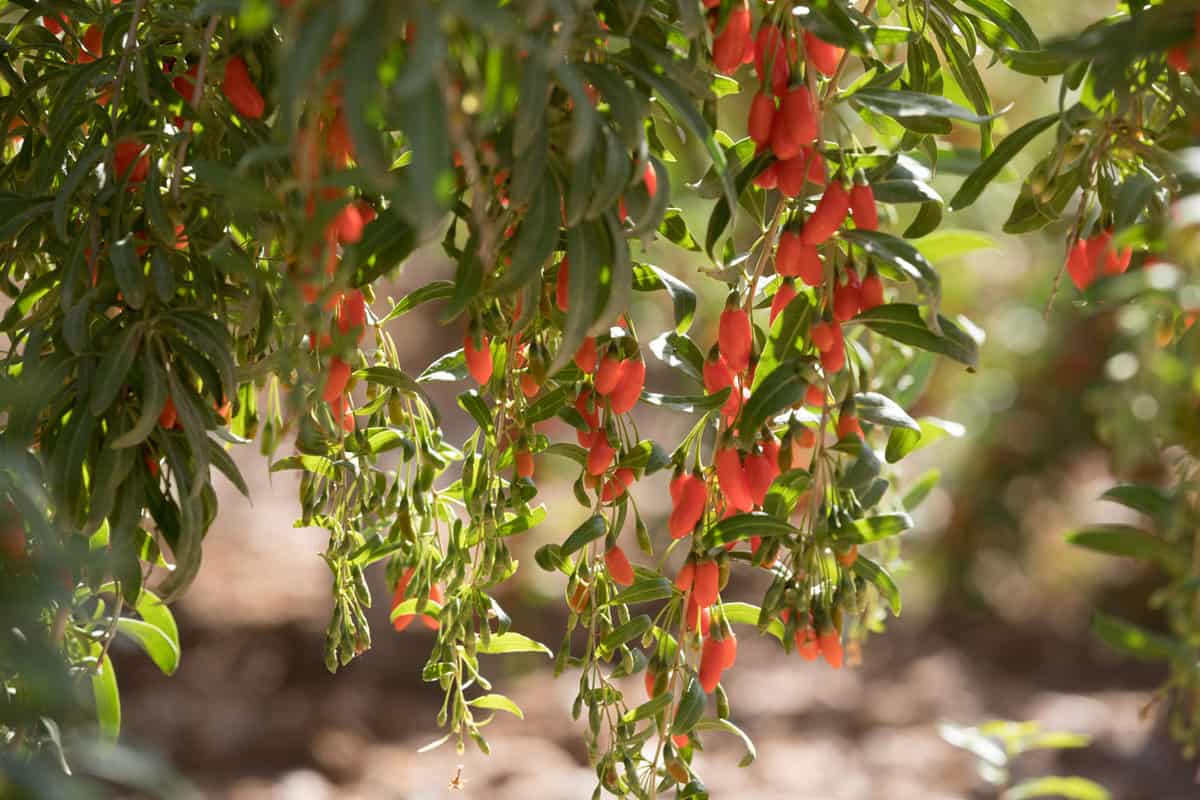
Typically, the stems of goji berry plants contain spines that may grow up to an inch long. These thorns can make handling the plant a bit tricky, so it is advised to use gloves or tools while pruning or picking the berries.
Safe Handling of Goji Berries
Handling goji berry thorns requires specific care and here's how to do it:
Using Protective Gear
When handling goji berry plants, it's important to wear appropriate protective gear to avoid injuries from the plant's thorns.
Wearing sturdy gloves, long sleeves, and long pants can help protect your skin from scratches and cuts caused by the thorns.
Additionally, wearing eye protection, like safety glasses, can prevent potential eye injuries from thorns or debris.
Always ensure that your protective gear fits securely and comfortably to help you work efficiently and safely.
Pruning Techniques
Pruning goji berry plants helps control their growth, maintain their health, and encourages a higher yield of berries.
Before pruning, gather the necessary tools like sharp, clean pruning shears, and ensure your protective gear is in place.
To minimize the risk of injury from thorns, prune goji plants when they are dormant and have fewer leaves, making the thorns more visible.
When pruning, focus on removing dead, damaged, or diseased branches, as well as any branches that are crossing or rubbing against each other.
Harvesting Techniques
Harvesting goji berries can be a delightful experience, but it's essential to consider the plant's thorns for a safe and efficient process.
Wearing protective gear during harvesting is crucial to avoid injuries from the thorns. Utilize soft, cushioned containers or baskets to collect the berries, as they can be easily damaged or crushed otherwise.
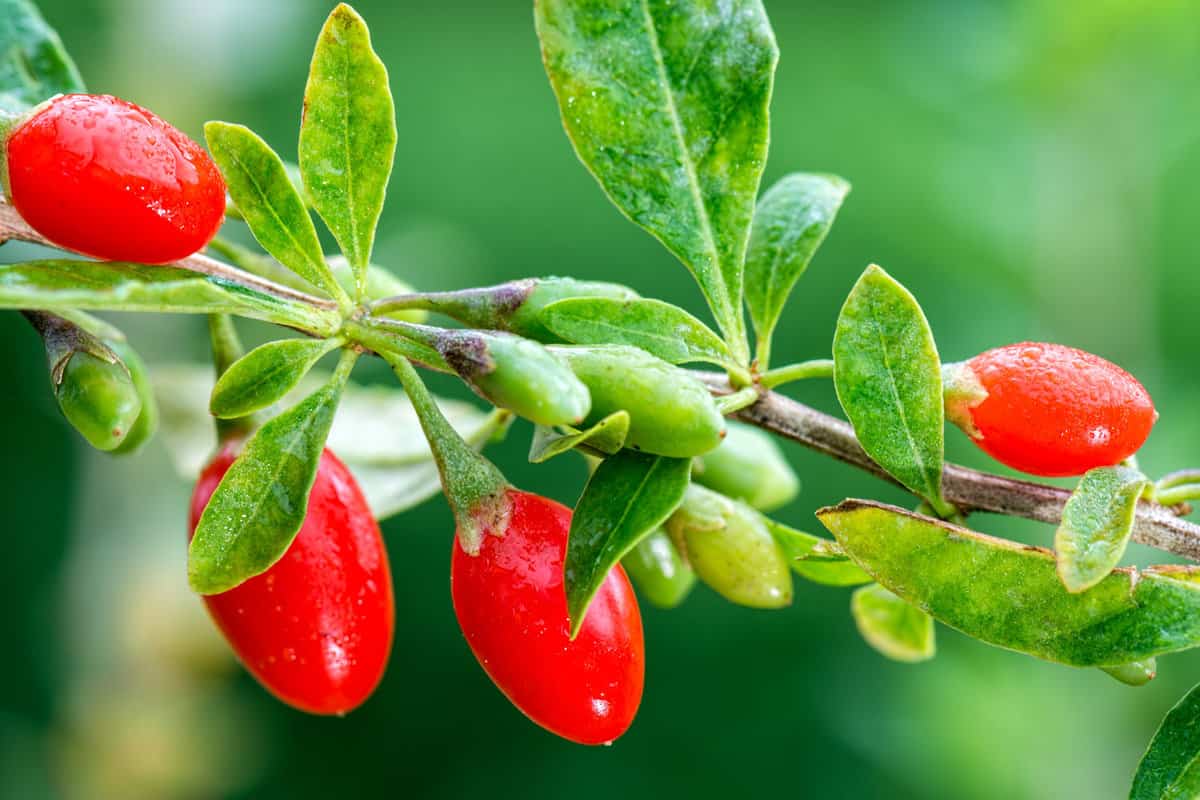
When picking goji berries, gently grasp the berry with your thumb and forefinger, pulling downwards to separate it from the stem.
Be careful not to pull too hard, as it can damage the delicate fruit. Harvest only fully ripe berries, which should be bright red and pliable to touch.
It's best to continually harvest goji berries in small quantities throughout the season as they ripen, to enjoy their freshness and maximize their potential health benefits.
Impact of Thorns on Goji Berries' Quality
While this plant's thorns can make handling the plant a bit challenging, they don't have a significant impact on the quality of the berries themselves.
Research has found that the optimal storage temperature for goji berries is 41 degrees F for approximately 9 days. Under these conditions, goji berries can retain their freshness, nutritional content, and overall quality.
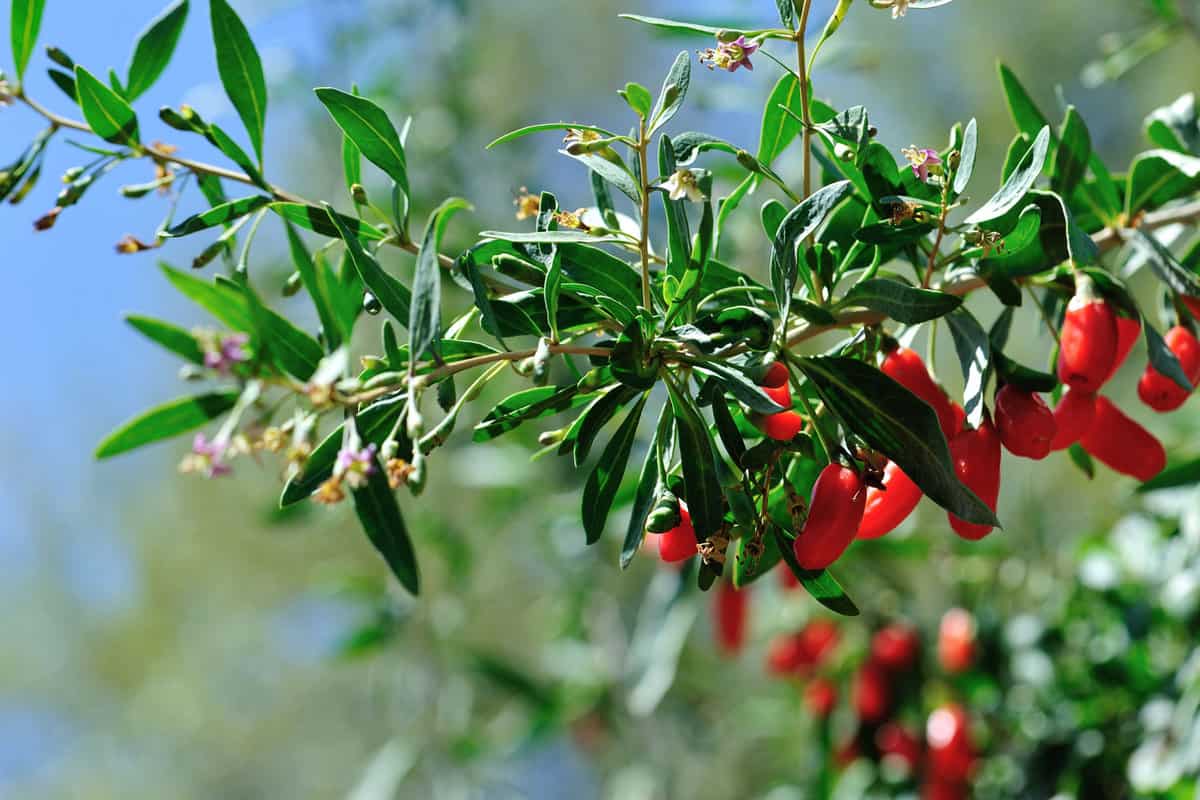
The presence of thorns on the goji berry plants should not deter people from consuming these nutritious fruits, as goji berries are rich in antioxidants, vitamins, and minerals.
In fact, different goji berry varieties, such as red, yellow, and black, can offer varying levels of antioxidant properties and nutrients.
Tips for Cultivating Thorny Goji Berries
Cultivating thorny goji berries can be a rewarding experience, as these nutrient-rich fruits are versatile and offer several health benefits.
To ensure a successful harvest and safe handling of your goji berry plants, follow these tips.
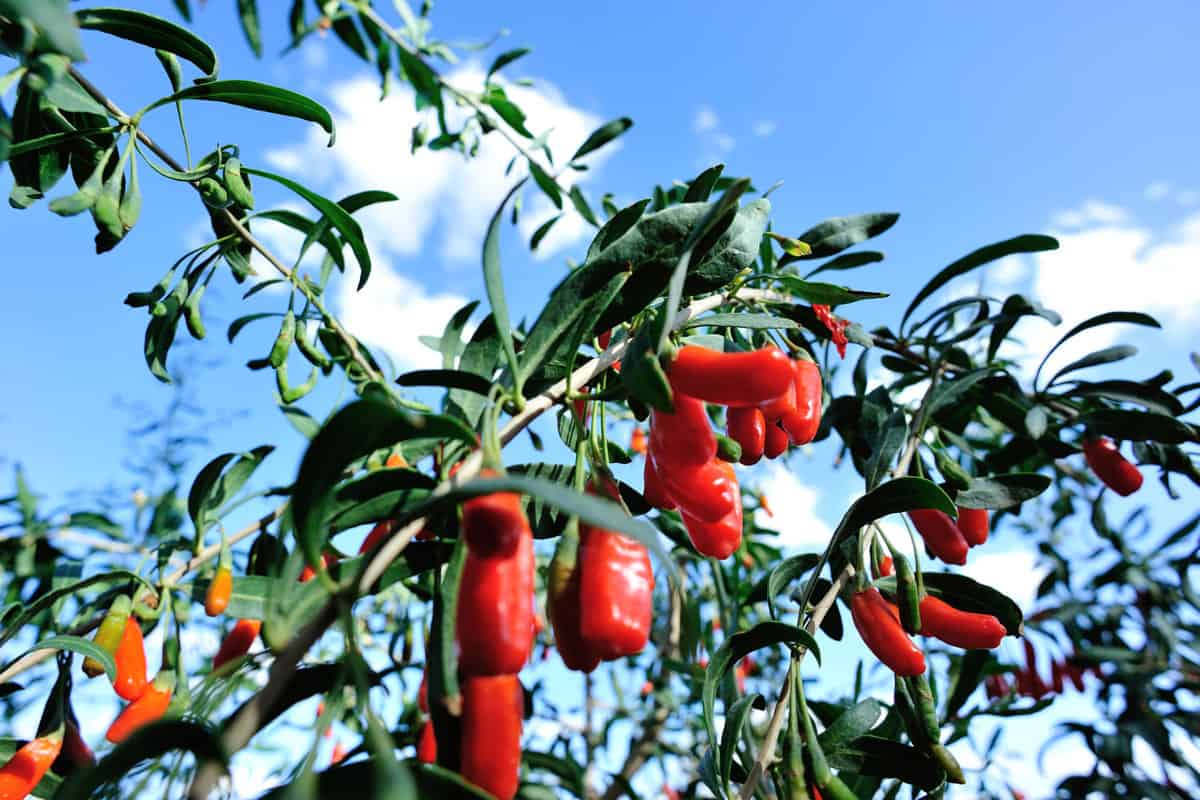
First, when choosing a location for planting, make sure that the area receives adequate sunlight, as goji berry plants thrive in full sun. Well-drained soil with a pH level between 6.5 and 8 is ideal for supporting their growth.
When planting your goji berry bushes, space them at least 4 to 6 feet apart to allow for proper air circulation and room for their growth.
Water the plants regularly throughout the growing season, especially during the initial establishment. However, avoid overwatering, as this can lead to root rot and other issues.
To protect yourself from thorns while handling your goji berry plants, always wear thick gloves.
Long sleeves and pants can also shield your skin from accidental scrapes and scratches. When pruning or harvesting the berries, use caution and take the time to identify the safest points for grasping the branches.
As goji berries grow on new wood, annual pruning is beneficial for encouraging fruit production.
Early spring is the best time to prune your goji berry plants, and you should focus on removing dead branches, unruly growth, and any branches that are rubbing against others, fostering a strong, healthy plant structure.
Fertilizing your goji berry plants can promote healthy growth and increase fruit production.
Consider using a balanced fertilizer and always follow the manufacturer's recommendations for application rates and frequency.
Common Misconceptions About Goji Berries Thorns
One common misconception about goji berries is that they are always thornless, making them easy and safe to handle.
While some cultivated varieties have been bred to produce less or no thorns, wild goji berry plants can indeed have thorns.
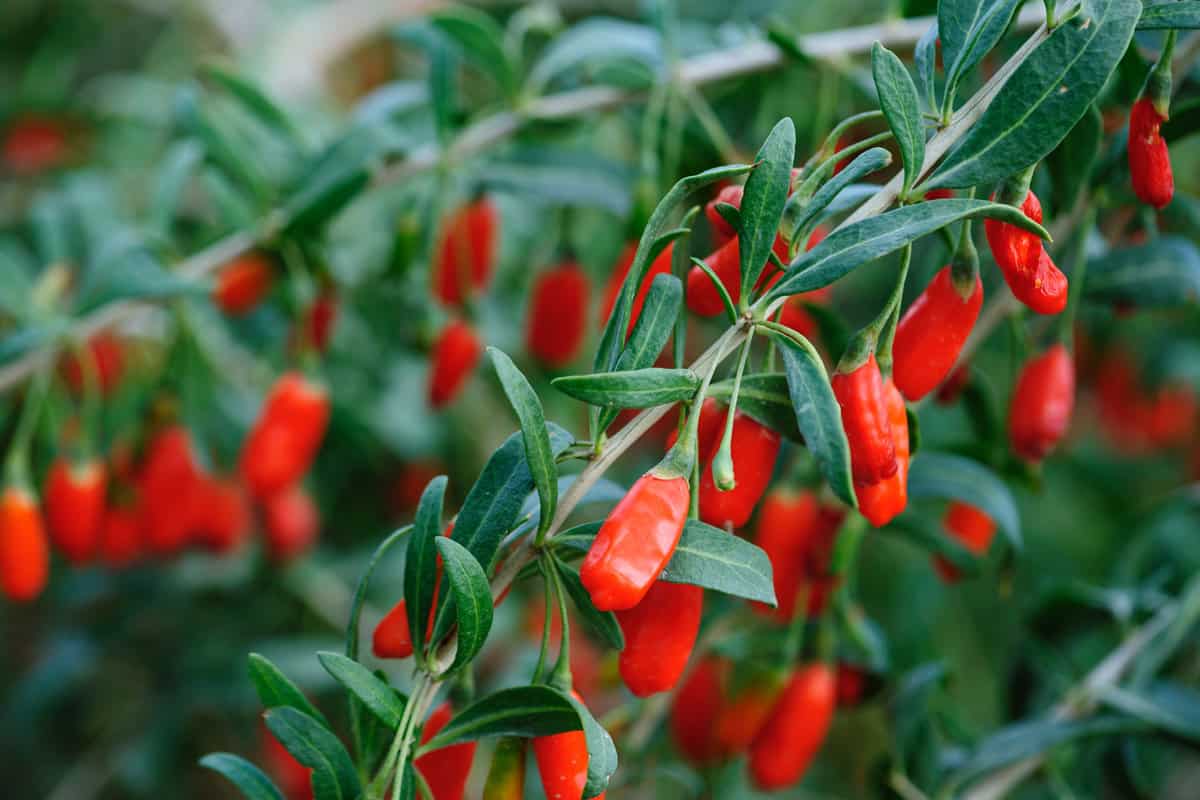
So, when dealing with goji plants, it is important to be cautious and wear protective gloves if needed.
Some people also believe that goji berry plants with thorns produce inferior quality berries. This idea could have arisen from the fact that thornless plants are often easier to cultivate and harvest.
However, there is no scientific evidence to suggest that the presence or absence of thorns has any direct impact on the quality or nutritional value of the berries themselves.
In Closing
Goji berry plants do indeed have thorns. When handling these plants, take necessary precautions such as wearing gloves, using gardening tools, and being aware of the plant's thorn locations.
By understanding how to safely handle the plant and acknowledging the presence of thorns, you can enjoy the fruits of your labor without injury.
Proper care and knowledge of goji berry plants, including understanding the presence of thorns, can lead to a successful and safe gardening experience.
Read more:
Does An Apricot Tree Have Thorns?
